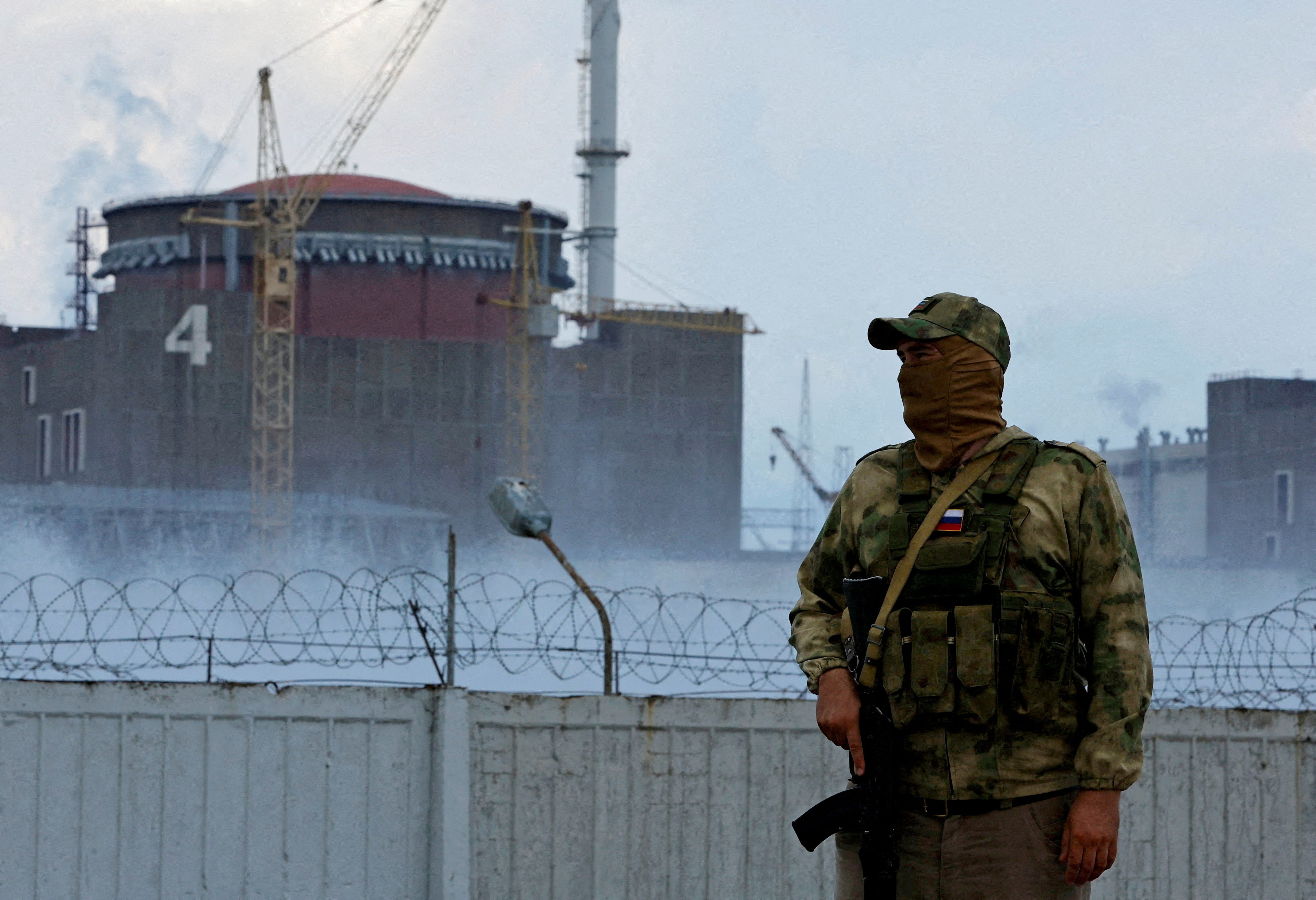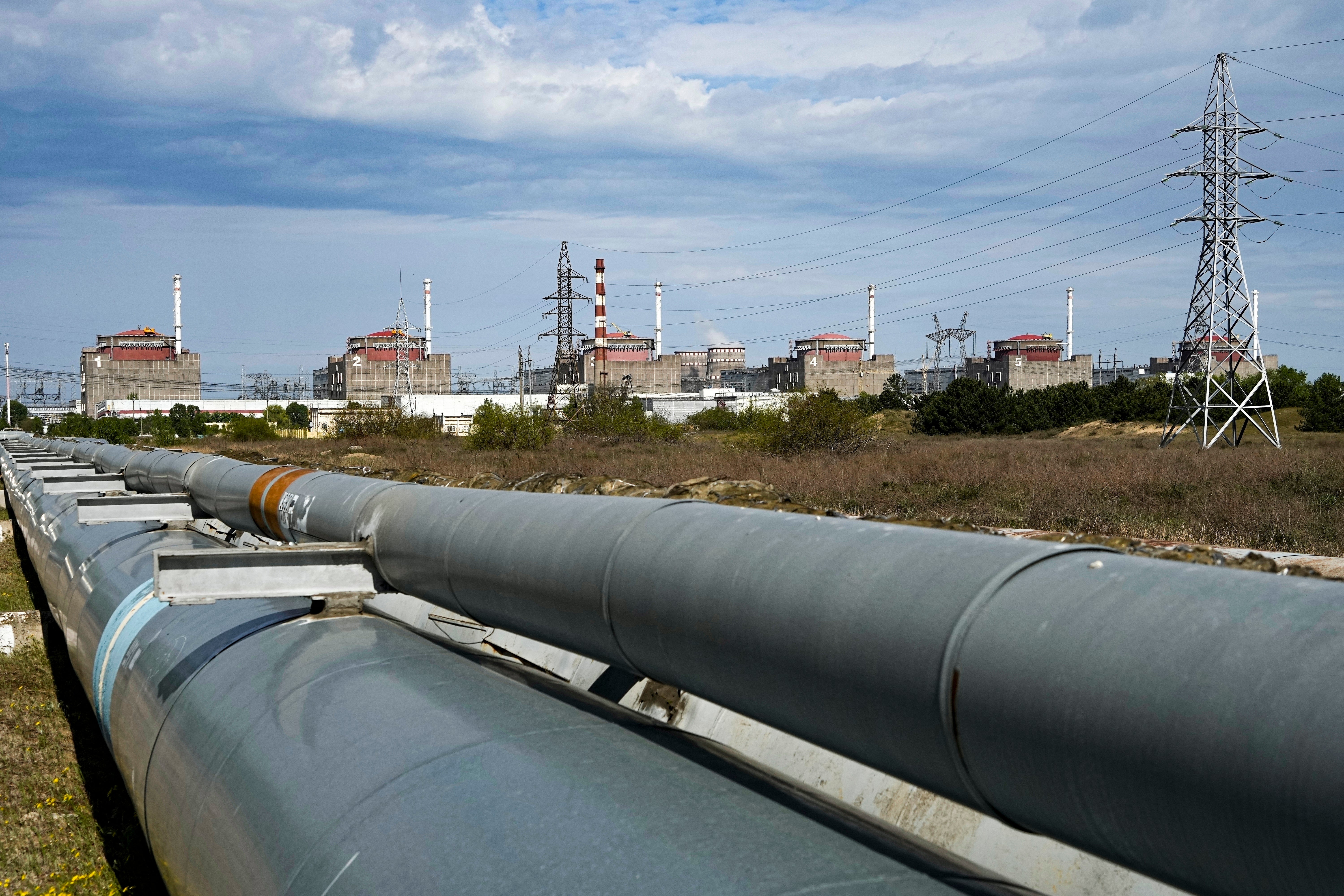Russia has taken control of one of the world’s biggest atomic power plants. Experts want to look inside
Ukraine’s Zaporizhzhia Nuclear Power Plant’s six reactors have been shut down for months

Fears remain over the ‘fragile’ security at one of the world’s biggest atomic power plants following Putin’s war on Ukraine.
Ukraine's Zaporizhzhia Nuclear Power Plant has seen worrying recent staff cuts enacted by Russian authorities occupying the facility, the United Nations nuclear watchdog chief said Tuesday.
The International Atomic Energy Agency (IAEA) has repeatedly expressed alarm about the facility amid fears of a potential nuclear catastrophe. The plant has repeatedly been caught in the crossfire since Russia launched its full-scale invasion of Ukraine on Feb. 24, 2022, and seized the facility shortly after.
IAEA chief Rafael Grossi, who is in Kyiv, said that his upcoming visit to the plant as the war approaches its two-year milestone will aim to assess the impact of recent personnel reductions after Russia denied access to employees of Ukraine’s Energoatom.
“This huge facility used to have around 12,000 staff. Now, this has been reduced to between 2,000 and 3,000, which is quite a steep reduction in the number of people working there,” Grossi said. “To man, to operate these very sophisticated big installations you need a certain number of people performing different specific functions.”
“So far the situation is stable, but it is a very, very delicate equilibrium,” he said. “So this is why I need to see for myself what is the situation, what are the prospects in terms of staffing, medium-term and long-term as well.”

The plant’s six reactors have been shut down for months, but it still needs power and qualified staff to operate crucial cooling systems and other safety features.
Rossi said he would also check the stability of the facility’s cooling function in the wake of the Kakhovka Dam collapse over the summer, and the presence of mines in and around the plant.
The plant suffered yet another blackout last month, highlighting continuing nuclear safety concerns as battles rage nearby.
“All these things tell us that the situation in Zaporizhzhia continues to be fragile and it requires constant care,” Grossi said.
Of particular concern is the Russian decision to block access for Ukrainian staff employed by Kyiv’s national operator, who refused to sign contracts with the Russian operator at the site.

The staff working at the plant now are former Energoatom workers who adopted Russian citizenship and signed new contracts with Russia’s operator at the site.
Reasons for the staff reduction vary. Some workers fled, many didn’t want to remain in occupied territory and those who decided to remain did not want to work for Russia.
“Some did continue working, and my Russian counterparts are telling me that they are signing up more and more people. So it’s something that we need to check,” said Grossi.
The plant’s six reactors have been shut down for nearly 18 months and produce no electricity but still hold large amounts of nuclear fuel that must be cooled. The collapse of the dam in June jeopardized access to the reservoir where water was drawn for cooling. To compensate, the plant administration dug wells. “Now we want to see how this has evolved,” Grossi said.
He is to meet with Ukrainian officials before heading to the plant. He is also due to travel to Moscow for talks with officials there.
Access to the entire plant facility for IAEA experts permanently based there is still limited, with Russian authorities denying requests to see certain areas.
Grossi confirmed his team observed anti-personnel mines in some areas of the plant, another cause for concern that he needs to see with his own eyes. He added, however, that the mines appear to be placed between the two perimeter fences.
“We say mines at a nuclear power plant are not advisable, but what we see is that the placement and the type of mines would not pose an immediate danger to the facility.”